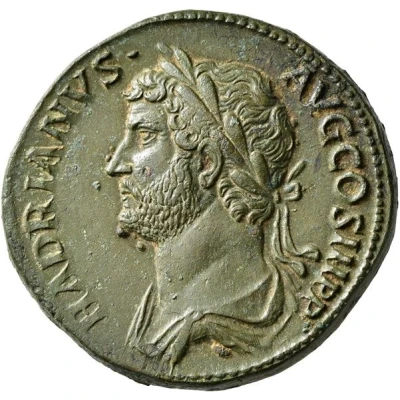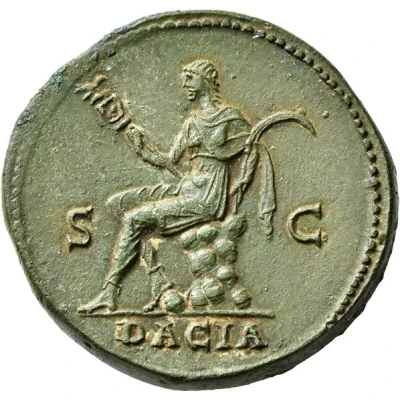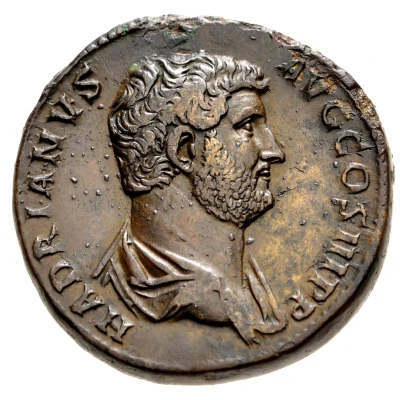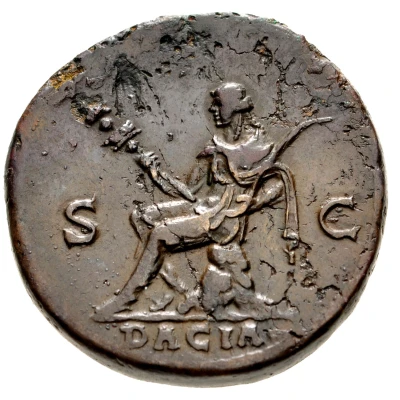


© Leu Numismatik
Sestertius - Hadrian DACIA S C; Dacia
| Orichalcum | 25 g | 32.5 mm |
| Issuer | Rome › Roman Empire (27 BC - 395 AD) |
|---|---|
| Emperor | Hadrian (Publius Aelius Hadrianus) (117-138) |
| Type | Standard circulation coin |
| Years | 130-133 |
| Value | 1 Sestertius = ¼ Denarius |
| Currency | Denarius, Reform of Augustus (27 BC – AD 215) |
| Composition | Orichalcum |
| Weight | 25 g |
| Diameter | 32.5 mm |
| Shape | Round (irregular) |
| Technique | Hammered |
| Demonetized | Yes |
| Updated | 2024-10-06 |
| Numista | N#256135 |
|---|---|
| Rarity index | 100% |
Reverse
Dacia seated left on rocks, sometimes resting foot on helmet, holding standard and falx.
Script: Latin
Lettering:
DACIA
S C
Unabridged legend: Dacia. Senatus Consultum
Translation: Dacia. Decree of the senate
Comment
Source: Online Coins of the Roman Empire (OCRE)Interesting fact
The Sestertius coin , which features Hadrian and Dacia, is notable for its use of the metal Orichalcum. Orichalcum was a type of brass alloy that was used in the production of some Roman coins during the 2nd century AD. It was prized for its durability and resistance to corrosion, and was often used to produce coins that were meant to be used in trade and commerce. The use of Orichalcum in the production of this coin speaks to the advanced metallurgical techniques and technologies that were available in ancient Rome.

